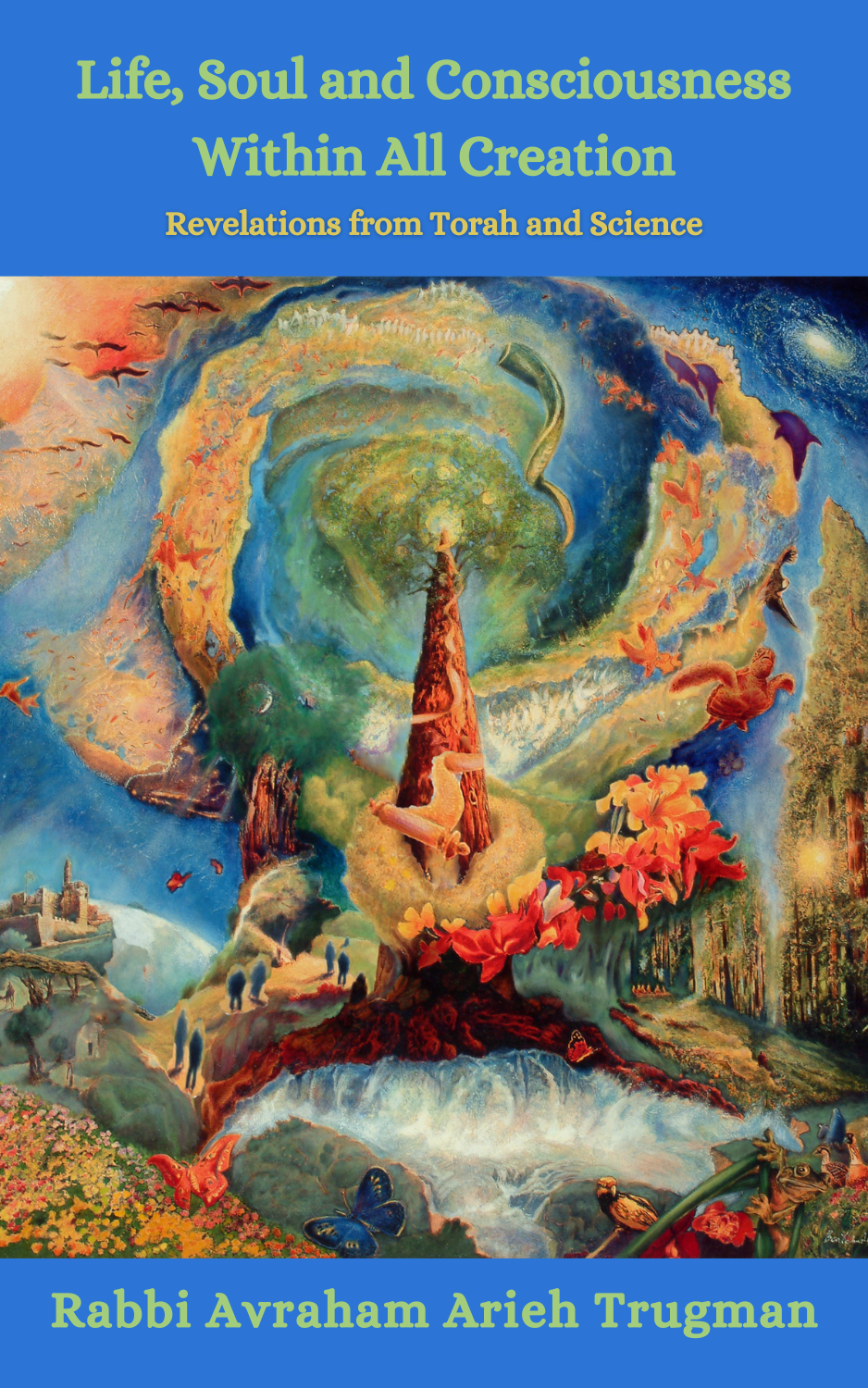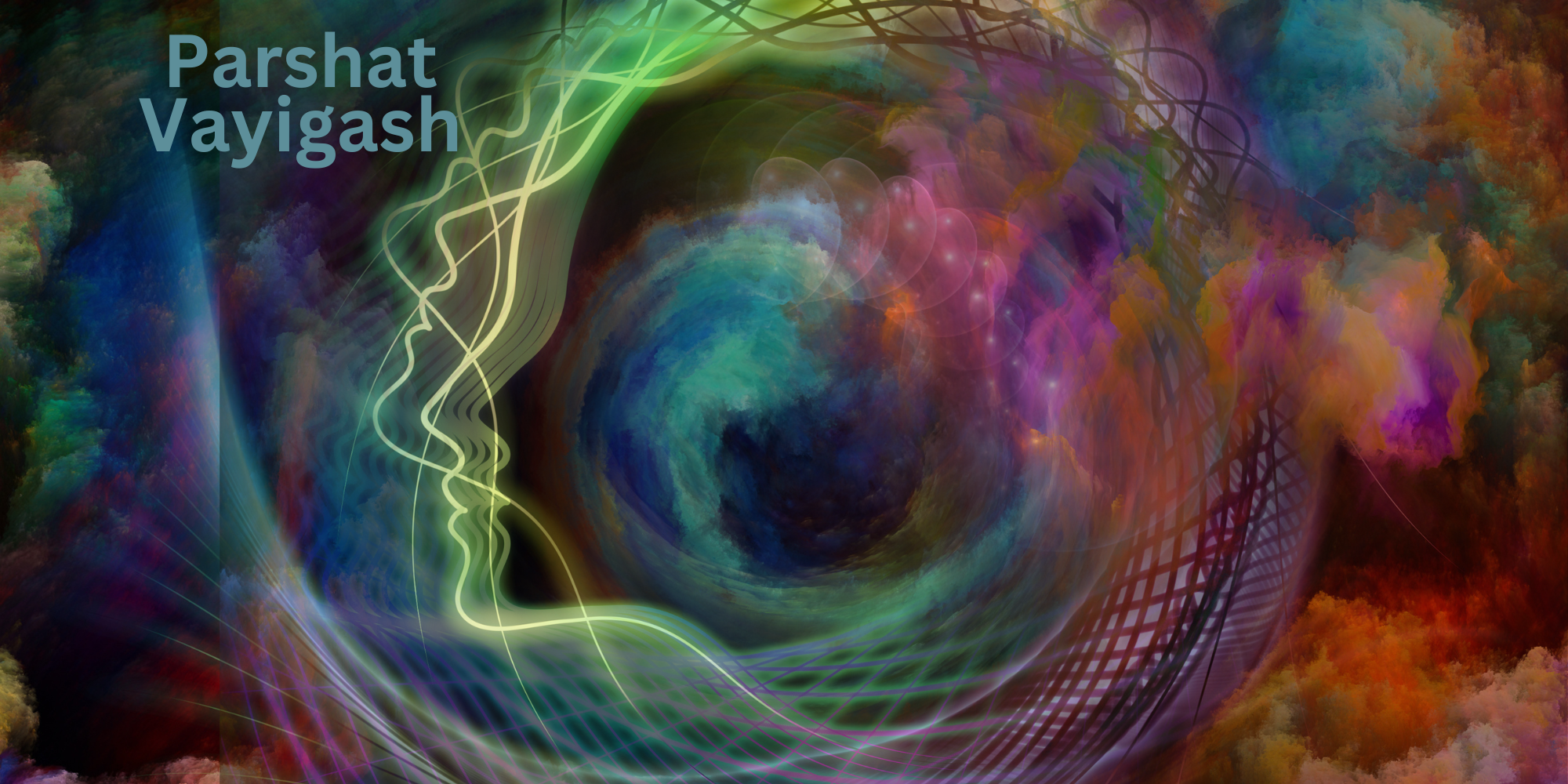It is written in the Zohar that the ladder in Jacob’s dream is a metaphor for prayer (Tikunei Zohar #43). This is not hard to understand, based on both the context of the dream and the symbols themselves. As noted above, Jacob prayed when “coming upon the place.” His prayer, recited at the beginning of night, became the paradigm for the evening prayer in Jewish tradition. In a sense, the dream was a continuation and superconscious transformation of the content of his prayer.
In the dream, the ladder represents prayer as the connection between man, situated at the bottom of the ladder, and God who appears at the top of the ladder. The Midrash saw in the dream the symbolic elements of the Temple service: the ladder represented the ramp leading up to the alter at the head of the ladder, from where the sacrifices rose to God, who appears above the ladder. The cohanim, who performed the Temple service were represented by the angels ascending and descending on the ladder. After the destruction of the Temple the sages transformed the Temple service by reformulating its symbols, themes and inner meaning into the synagogue and the service of prayer as practiced today.
As noted above, the numerical value of sulam, ladder equals 136, the same as kol, voice. The ladder is the voice of prayer rising from the heart of man who is firmly entrenched in the physical world below, till it reaches the heavens and God who is ever present above the ladder. Through the act of prayer man’s consciousness rises from rung to rung, and although standing on the earth, his or her spiritual awareness is truly elevated to the heights of heaven.
In the accepted rules of Jewish numerology called gematria, an additional number for the all encompassing concept of the word itself may be added to the product of all the letters Adding one more to 136 gives us 137, the numerical value of the word Kabbalah. In addition to Kabbalah meaning to receive, it also means to make correspondences and proper connections, which Rabbi Yitzchak Ginsburgh teaches is the actual function of Kabbalah. Through learning the inner dimensions of Torah we become sensitized to seeing the incredible web of connections and correspondences throughout all creation. This brings us to a true understanding of the unity and oneness of God.
Based on the teachings of the Arizal, the Baal Shem Tov emphasized the unique opportunity prayer offered to connect directly to God. By re-introducing song and meditation as integral elements of prayer he reformulated the experience of prayer for the masses into a joyous, deeply personal, spiritual experience. All Chassidic thought and custom follows upon the teachings of the Baal Shem Tov in this matter.
The students of the Baal Shem Tov recorded his various teachings regarding prayer into a treatise called Amud HaTefilla, the [Standing] Pillar of Prayer. A pillar and a ladder are similar in their connotation of standing erect and connecting earth to heaven. The name of the quintessential prayer in Judaism is the amida, meaning standing, the same root as amud, pillar. The ladder being firmly entrenched in the earth represents the humbleness with which a person needs to stand before God, while its head reaching the heavens symbolizes the spiritual potential of man. The emphasis, as driven home by the name of the prayer, is of standing before God, for that is ultimately the stature He envisioned for humanity by creating man “in the image of God.”
One of the most important teachings of the Baal Shem Tov, which is included in the treatise, is his description of three rungs of consciousness which encompass all experience and reality: worlds, souls and Divinity. That which connects the physical world with the spiritual realms of Divinity is the soul, which very much like the angels on the ladder, become the connecting and unifying force in reality.
At the rung of worlds man searches for God, at the level of souls man attempts to serve God, at the highest rung man longs to unite with God. In relating to worlds man’s task is to uplift, ascending above the mundane and gravity bound weight of physicality. Souls are drawn to connect to other souls in intimacy and sharing friendship. The passion of the soul is ultimately to unite with God, losing all sense of individual separateness.
| LEVEL | SERVICE | EXPERIENCE |
| Worlds | Searches | To Uplift |
| Souls | Serves | To Connect |
| Divinity | Unites | To Unite |
The three rungs of worlds, souls and Divinity and the interaction between them describe the constant processing of experience transpiring in our inner consciousness, as well as our daily encounter with outer reality. They also serve as an accurate description of how our dreams are manifest soul energy acting like angels going back and forth between multi levels of consciousness, trying to bridge the infinite aspect of God within us and the finite limited world we live in. One Midrash (Yalkut Reuveni) states that the ladder in Jacob’s dream had four rungs. A great scholar and Kabbalist known as the Shlah correlated the four rungs with the four worlds of Kabbalah mentioned previously. (Also see Or HaTorah, Vayetzei Volume 4 pp.838). The Arizal taught that prayer itself should be envisioned as comprising four sections or rungs on a ladder and that these sections relate implicitly to the four ascending worlds of Kabbalah.
vThe first rung of prayer comprises the preliminary morning blessings until the prayer Baruch Sheamar, which begins the next section. The morning blessings correspond to the world of Assiyah, action. The series of blessings thank God and acknowledge His goodness in providing for all the basic abilities and requirements enabling us to function in the practical world of action. This first section resembles the ladder resting upon the practicalities of life. First thing in the morning we fine tune our behavioral instincts in order not to take our blessings for granted and strengthen our resolve to use our faculties to the best of our ability.
The second rung consists of the section of prayer referred to as Pesukei D’Zimrah, Verses of Praise. These prayers are comprised of the psalms of David, inspiring praises to God for creating the beautiful world we live in. This section corresponds to the world of Yetzirah, formation. Nature both reveals and hides God. It is for us to search for God and praise His manifest creation, maintaining a sense of awe even when “grown up.” This world relates to our emotional attachments and response to the world around us. Praising God is a positive and constructive way to lift us above the voice of petty emotions and small minded ego games that at times keep us from even stepping on the ladder of higher ideals and goals in life.
The next section of prayer is centered around the recitation of the Shema, the cardinal expression of belief in Judaism. This section begins with a description of how the angels daily praise God and leads into the Shema, the consummate human understanding of the nature of God. The beginning of this section represents the angels ascending and descending on the ladder and culminates with man standing humbly, yet elevated, ready to speak directly to the Creator. This once again teaches us that ultimately the soul is rooted in a higher place than even the angels. This third rung corresponds with the world of Briyah, creation and relates to the intellect.
It is significant that it is at this level that we express our faith and belief in the oneness of God, for in Judaism belief and faith are ultimately rooted in a deep level of knowledge. A beautiful allusion to this idea is found in an acronym formed by the three letters for Adam, ??? , man: ????? , faith,; ???, knowledge and ???? , action. Our faith, based on a deep understanding and knowledge must be put into practical actions that reveal and manifest this faith and knowledge.
The final rung on the ladder of prayer is the recitation of the Amida, the silent prayer. This corresponds to the world of Atzilut, emanation, where man encounters God who appears above the head of the ladder, in a state of intimate union. Paradoxically, it is at this moment of mystical experience that, along with praise and acknowledgement of God and expressing communal aspirations, we communicate to God our private needs and physical requests. This once again emphasizes how ultimately the realms of physical and spiritual, body and soul, heart and mind, temporal and eternal, must be united in a holistic world view.
Section of Prayer Corresponding World Experience Morning Blessings Assiyah – Action Thankfulness Pesukei D’Zimra Yetzirah – Formation Praising the Works of Creation Shema Briyah – Creation Understanding the Unity of God Amida Atzilut – Emanation Intimate Union with God
Prayer has many forms and means of expression, for both the individual and the community. When King David declared: “And I am prayer” he was exclaiming that prayer is not something I do – it is who and what I am, it is a state of constant relationship and clinging to God. When Jacob dreamt of a ladder on that auspicious night, he was both consciously and unconsciously, acting as a vessel through which prayer was revealed as the means to climb upwards till standing humbly yet faithfully before God.







